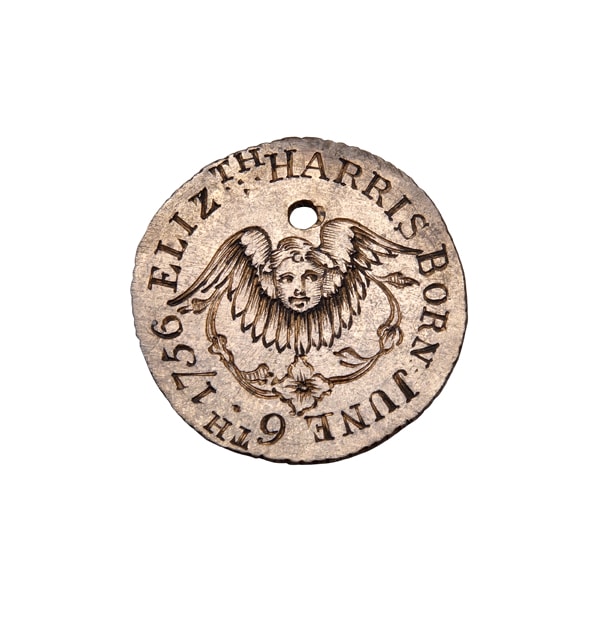About the object
Coins rubbed smooth
This token was made by rubbing one side of a coin smooth and then engraving it. Several tokens in the Collection were made this way. On this one, a child’s name –’Elizabeth Harris’ – and birth date – 6 June 1756 – encircle the image of an angel. The other side of the coin shows that it was originally a James II shilling, minted over fifty years earlier, in 1700.
Clerical error
We can be pretty certain that this coin relates to a girl admitted to the Hospital in 1756. She came with a note from the vicar of Harmondsworth in Middlesex. In it, he calls her Mary Harris, daughter of John and Elizabeth Harris. It seems that the vicar made a mistake and swapped the mother’s and daughter’s names. But helpfully, he also noted that the child was baptised on 7 June, the day after the birth date engraved on this token. This link, along with the matching last name, helps to confirm the match between token and child. The child was renamed Anne Thaxted by the Hospital. Like other Foundling children, she was initially sent out of London to be cared for by a wet nurse. Anne survived long enough to return to the Hospital, but died of measles when she was eleven or twelve.
A seven-year sentence
A footnote added by the vicar notes that the child’s father was a felon who had recently been transported. This could explain why Anne’s mother was unable to care for her. In January 1756 (four months before the child was born), a John Harris was tried at the Old Bailey for stealing coal. He was convicted and sentenced to transportation for seven years. Penal transportation to North America (and later to Australia) was a punishment applied to crimes such as theft. Transported people were forced to work for the period of their sentence. After that, they were left to make their own way back home, thousands of miles away.
